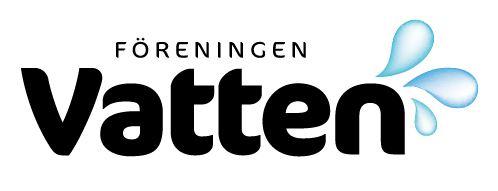THE USE OF GLEAMS MODEL TO PREDICT PHOSPHORUS LOSSES FROM DRAINED CLAY SOILS / Användning av GLEAMSmodellen för att förutse fosforförluster från dränerade lerjordar
Consideration of the impact of preferential flow is important for accurate predictions of phosphorus (P) losses for structured soils. The possibilities for adapting the GLEAMS model to preferential flow were investigated for two tile-drained structured clay soils, one in south-west Sweden and the other in central Sweden The results indicated that GLEAMS was capable of […]
SUBSURFACE MACROPHYTE SYSTEMS IN WASTEWATER TREATMENT
There is a growing need and demand for the removal of nutrients from the wastewater of isolated households and small rural communities; ecological engineering through natural and constructed wetland systems shows promise in meeting stringent wastewater treatment criteria. Wetlands constructed with different hydraulic designs have shown a range of nutrient removal efficiencies. Vertical stratification has […]
VATTENEXPORT I STOR SKALA FRÅN SVERIGE OCH FINLAND / Water export on large scale from Sweden and Finland
Scientists at the Royal Institute of Technology and members of the Swedish Water Environmental Council have completed a pre-investigation concerning the conditions for export of water on a large scale from Sweden and Finland. Different aspects associated with water export were studied within the frame of the pre-investigation. They involve global and regional needs of […]
EMÅPROJEKTET- PILOTPROJEKT FOR LÅNGSIKTIGT HÅLLBAR SAMHÄLLSUTVECKLING I ETT AVRINNINGSOMRÅDE / The River Emå Project – a pilot project for a sustainable development of a river basin
The River Emån is the largest watercourse in the south-eastern part of Sweden and it’s also one of Sweden’s most valuable rivers, both the river and parts of its surroundings, being classified as of National importance for nature conservation and cultural history. The catchment area of the river however is affected by a number of […]
JÄRNKLORID SOM KOAGULANT VID DRICKSVATTENFRAMSTÄLLNING – ETT PILOTFÖRSÖK VID LOVÖ VATTENVERK / Ferric chloride coagulation in drinking water treatment – a pilot plant study at Lovö waterworks
Stockholm Water Company operates two waterworks, Norsborg och Lovö. Both treat raw water taken from Lake Mälaren with the following process: coagulation with aluminium sulphate, sedimentation, rapid sand filtration, slow sand filtration and desinfection with chloroamine. A pilot plant scale test was performed at Lovo waterworks during spring 1996. The main objective with the study […]
ÖVERGÖDNINGENS OCH METALLUTSLÄPPENS PÅVERKAN PÅ MAKROALGERNA GRÖNSLICK [CLADOPHORA GLOMERATA) OCH ULLSLEKE [CERAMIUM TENUICORNE) / The influence of eutrophication and metal contamination on the seaweeds Cladophora glomerata and Ceranium tenuicorne
The changes in the state of equilibrium between the two common Baltic sea-algae Cladophora glomerata and Ceramium tenuicorne as a result ofeutrofication and the discharge of metals has been studied. The results show that C. glomerata is more capable than C. tenuicorne to utilize an enhanced content of nutritive substances for growth. C. glomerata shows […]
A STUDY OF THE INFLUENCE OF CRACKING ON WASTEWATER SLUDGE DRYING BEHAVIOUR / Sprickbildningens inverkan på slamtorkningsförloppet
Aerobically digested mixed biological and aluminium precipitated sludge with an initial total solids content of ca 5 % was tested on 5 pilot sand drying beds indoors. The test run continued for 84 days in a controlled environment, with a relative humidity of 30—40 % and a temperature of 24-27°C. The results showed that: — […]
PARTICLE DYNAMICS IN THE DRINKING WATER DISTRIBUTION NETWORK OF LULEÅ / Partikeldynamik i Luleas dricksvattennät
An investigation of the particle quantity and size distribution, along with the turbidity pattern, has been used to study particle behaviour within the municipal water distribution system of the city of Luleå, Sweden (65 000 consumers). The water source is the Lule River, which has a soft water with a hardness of 20-30 mg/L as […]
MIKROSVAMP OCH AKTINOMYCETER I DRICKSVATTEN / Microfungi and actinomycetes in drinking water
During the last two decades analyses of microfungi (yeasts and moulds) and actinomycetes have been conducted on drinking water in Sweden. From originally being a pilot study conducted to obtain knowledge of the extent to which these microorganisms can be detected in untreated water and in the distribution network, today the analyses are conducted both […]
FÖRSLAG TILL EKOTOXIKOLOGISK RISKBEDÖMNING AV SEDIMENT – INTEGRERAD KEMISK OCH BIOLOGISK KARAKTERISERING / Proposal for an ecotoxicological risk assessment of sediments – An integrated chemical and biological characterisation
A strategy for the sampling, analysis and biological assessment of sediments contaminated from a variety of sources in urban areas, such as industry and surface run off is suggested for Swedish conditions. The strategy is suitable for an initial assessment of chemical content, bio-availability, genotoxicity and the persistence of known persistent pollutants. The strategy includes […]
